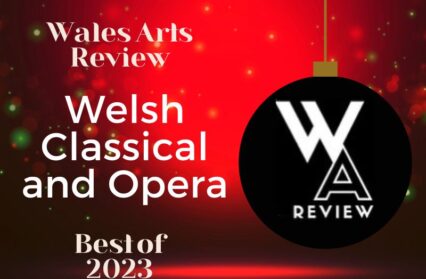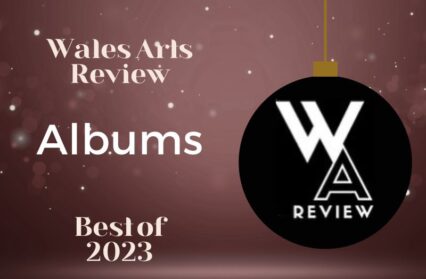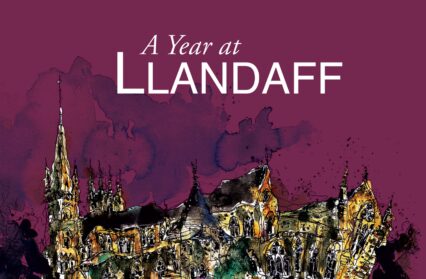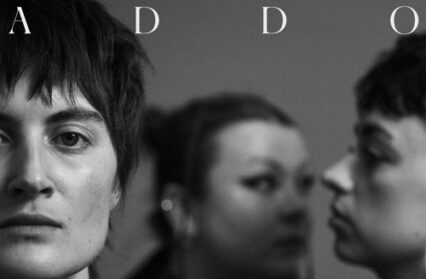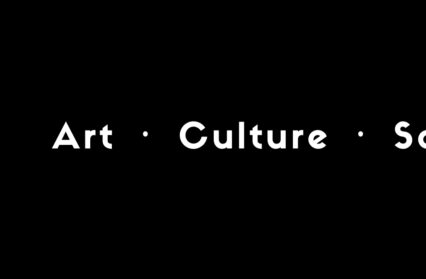Endaf Emlyn, creator of the first Welsh-language concept album, reflects on his musical career in a conversation with musician and writer Huw Thomas.
Hiraeth. It is a word often misused and commercialised, but the particularly Welsh longing it conjures up has followed much of the work of Endaf Emlyn. For half a century, he has been one of Wales’s most inventive and influential artists. Born in Bangor and raised in Pwllheli, Endaf’s musical talent led him out of North Wales and to Abbey Road and Tiger Bay. In 1974, he recorded the first Welsh-language concept album, Salem, an evocative work that explores the receding world of the chapel through Vosper’s famous painting. However, he has frequently challenged the orthodoxy: during the New Wave era, he delighted and alienated audiences in equal measure with his funk and jazz rock projects. 50 years on from his first album, Endaf speaks about trying “to fill in the gaps in the culture”.
I speak to Endaf Emlyn via Skype and find him sitting in his garden in the sun. He was born in 1944 to a musically-oriented family. “I could sing before I could speak,” he says. “Apparently, I knew loads of carols. My father was a trombone player at one time and my mother sang – everybody sings, of course.” Having been entranced by a string quartet concert at his local village hall, Endaf originally pursued a career as a fiddle player. “My father was very keen on this because he wanted me to carry on where he’d given up, in a sense,” he explains. “I became quite good at it quite soon. I played in the school orchestra and progressed to the National Orchestra of Wales. I was in the National at the same time as John Cale and Karl Jenkins, but I realised I probably wouldn’t get to play the solo as a professional musician. I would be somewhere in the desks of the fiddles. That didn’t seem to work for me, plus I was getting into rock and roll, of course.” Thrilled by Chuck Berry and Elvis, Endaf took up the guitar. At eighteen, he performed a version of “Can’t Help Falling in Love” in a youth club competition judged by folk historian and performer Meredydd Evans. “1962 was a very important year for me,” he remembers. “My mother died and I gave up everything really, I gave up the fiddle. I left home, I went to college and the Beatles came into being. They were doing things with the pop song that hadn’t been done before and that was inspiring.”
It was broadcasting, however, that brought Endaf to national attention. After leaving college, he landed a job as a newsreader for BBC Wales “to general astonishment”. Beginning in 1967, he regularly appeared on Disc a Dawn, Wales’s first pop music programme, presenting a weekly review of UK chart hits. In May 1968, Endaf was announced as one of four initial announcers for Harlech Television (later HTV). In this role, he used a standard received pronunciation accent quite unlike his real voice. “It’s terrible, isn’t it?” Endaf says today. “I used to present stuff haltingly and badly. I had to go for elocution lessons at the BBC because I don’t really have my own natural English accent. Now when I look back, I wish that hadn’t happened.”
Whilst working for HTV as a presenter and floor manager, Endaf followed a parallel career as a musician. In 1971, he signed to M&M Music, Tony Hatch’s publishing company, and recorded his first single, the English-language “Paper Chains”, for Parlophone. Tony Blackburn made the song Record of the Week on BBC Radio 1 but it was the B-side that was more important for Endaf. “I’d asked to do the B-side in Welsh,” he remembers. “’Madryn’ was a song about homesickness, I was sort of displaced and living in Cardiff. It was culturally significant in a way that just another pop song wasn’t. I changed course completely then and that’s what I’ve done since – I’ve tried to fill in the gaps in the culture.” Endaf’s stint with Parlophone lasted for two more English-language singles including the excellent ‘Goodbye “Cherry Lill”’, a Beatlesque piece thick in harmonies and melancholia, and paired him with producer Mike Parker. “He was a guitar player, as far as I knew,” Endaf says. “I went to meet him at Abbey Road and he was sitting at the organ doing all the Brian Auger stuff. He was a multi-instrumentalist, hugely talented, and we got on very well although we were from completely different worlds – he was from Walthamstow, I’m from Pwllheli.”
Retaining Parker as producer, Endaf moved into making exclusively Welsh-language music. His first album, Hiraeth, was recorded partly at Rockfield Studios during Hawkwind’s downtime and released by the Carmarthenshire-based label Recordiau’r Dryw in 1972. Its ten songs exhibit a strong American influence, with the title track a modified version of Randy Newman’s “Living Without You”. Each is carried by Endaf’s voice, pure and highly expressive at once. “In a nation of folk singers and poets, I always felt pressure to justify any offering. It’s a tough audience,” admits Endaf. “When I did Hiraeth, it was quite strange to the Welsh audience at that time because it was a different kind of music altogether, it sounded mid-Atlantic. I felt they could’ve been a bit more enthusiastic. I thought ‘I’ll make the next one so Welsh they can’t quibble about it’.”
He found inspiration in “Salem”, the famous 1908 painting by Sydney Curnow Vosper depicting a scene in Capel Salem, a Baptist chapel in Gwynedd. Its central figure, a local widow named Siân Owen, is shown entering the chapel wearing a Welsh hat and an ostentatious shawl. In the pews behind her are several members of the community, some in prayer. The piece has become a popular shorthand for the Wales of old, and Siân Owen an emblem of Welsh piety, tradition and dignity – a dignity troubled by the persistent urban legend that the face of the Devil is hidden in the folds of her shawl. Reproductions of “Salem” hung in many Welsh households, some still do. “My auntie Nell had one on the wall,” Endaf remembers. “I liked the myth about the Vosper picture and I thought I could construct something along the lines of Elton John’s concept album Tumbleweed Connection.”
Endaf set about writing songs based upon the people captured in Vosper’s painting including Siân Owen, the deacon and farmer Robert Williams of Caer Meddyg and the young boy Evan Edward Lloyd. “Although the choice of topic was calculated, I found it was a very natural world for me to depict,” he says. “I’m deeply chapel-raised, soaked in hymns and prayers. The album is about that picture, but it’s also about all of us saying goodbye to the world of the chapel. There’s not much of it left, really. It was a huge influence on all our lives and on Welsh culture – that’s why we have the language, I think, because of the chapel. It became much more of a personal album than I thought it was going to be.”
Over March 1974, Endaf and Mike Parker built up the album, simply titled Salem, on a four-track TEAC tape recorder. Stwdio Madryn – the recording location cited on the album’s sleeve – doesn’t really exist. “It was made in my kitchen in Cardiff,” Endaf professes. “Sometimes it was Mike’s kitchen, so some of those songs about old blokes in Sir Feirionnydd were put together in Walthamstow. It’s a four-track album, so it’s live in the sense that everything goes down. The enemy was noise.” When the album was finished, Endaf went to the office of Recordiau Sain and popped the tape box on the desk. Sain, founded in 1969 by folk singers Dafydd Iwan and Huw Jones, was at the centre of an upswell in contemporary Welsh-language music. When the label issued Salem, adorned by an interpretation of the Vosper painting by Elwyn Davies, it was a first. “I was aware from the outset that Salem was the first concept album in Welsh,” says Endaf. “I wanted more than a random set of songs. I was trying to get to direct film at that time and the album was maybe my film without pictures.”
There may not be another album that reflects Wales’s national identity better than Salem. On “Salem yn y Wlad”, Endaf sings of entering the Vosper painting “trwy hud dychymyg” (through the magic of imagination) and, sure enough, much of what follows sounds like a celestial meeting with the past. The album’s construction reflects the chapel: the two sides are denoted oedfa’r bore and oedfa’r hwyr – morning service and evening service – and hymnal organ pieces bookend each. However, the traditional harmonises with the contemporary when Stevie Wonder-inspired Moog parts punctuate tracks like “Abel y Mur”, “Hen Benillion” and “Laura”. The album’s most hard-edged moment, “Evan Edward Lloyd”, superimposes the life of the boy in the painting with Endaf’s own memories of “a timeless childhood, never-ending summers in Llŷn.” With its delicate, fuzzy-felt sound and freewheeling spirit, Salem is a clear forerunner to the psychedelic folk work of bands like Gorky’s Zygotic Mynci. That it was recorded on a four-track in Endaf and Mike’s respective kitchens seems almost paranormal. “There’s no kit on Salem,” reveals Endaf. “The snare was a rolled-up Evening Standard thigh-whack and the kick drum was the cardboard box my Revox came in. I think, had I been recording in a studio, these songs would have been fuller, heavier. Fortunately, I didn’t. I would have lost that simple directness.”
Endaf undertook no gigs to promote Salem. “I had the daft idea that I could function as a ‘studio artist’,” he says. “I was still working my way out of a troubled youth and too much pressure to perform, and succeed.” The album’s release anticipated a string of conceptual projects marrying rock and the Welsh identity: 1975 saw many of the Sain stable contribute to Nia Ben Aur, an ambitious Welsh-language rock opera, while Endaf was commissioned to write the music for Melltith ar y Nyth, a BBC Cymru production based upon the Second Branch of the Mabinogi. In addition to this, he was recruited to provide the theme music for a new Welsh-language soap opera. “John Hefin, the producer of Pobol y Cwm, liked Salem and asked me if I would write for it,” recalls Endaf. “There was no map – I just instinctively felt it had to be a little bit rural. There’s the cadence you would find in a hymn.” Part of the programme ever since, Endaf’s haunting guitar piece may have inspired another soap theme tune. “Julia Smith who created EastEnders came to Cardiff to observe Pobol y Cwm being made and John Hefin told me himself that she gave the tape to the writer of the music to EastEnders and said ‘something like that’. If you listen to it, it is there. My melody, which is kind of chapel, has been expressed in a slightly different way. It’s not actionable!”
The follow-up to Salem was Syrffio (Mewn Cariad), a concept album of tropical psychedelia. Its sun-kissed sound has kinship with Brazilian MPB music, though the similarities are coincidental. “Syrffio was constructed in a funny way,” Endaf recalls. “Mike was busy then, so I got a band together to put basic rhythms down for all the songs and then I did all the overdubs. It’s full of excessive guitar and synth, but I enjoyed it and I pardon its excesses looking back.” In 1977, Endaf joined something of a supergroup. “I was approached to join a much-fabled band, Injaroc, made up of the remnants of Sidan and our own Status Quo, Edward H. Dafis,” he says. “Edward H. were hugely popular back in the 70s. When they split up, their fans never forgave them, so we were always fighting the ghost of Edward H.” The group failed to coalesce. “It was doomed from the beginning,” says Endaf. “There were eight of us in the band. Far too many. You’d get my songs, you’d get Geraint Griffiths songs, you’d get Caryl Parry Jones songs and they would all be very, very different. It was like an Irish showband.” The highlight of Injaroc’s sole album Halen y Ddaear!! is one of Endaf’s compositions – a grand ballad titled “Swllt a Naw”.
A purple patch in Endaf’s musical career came after guitarist Myfyr Isaac introduced him to a new musical influence. “I met Myfyr when he came to HTV studios where I was a floor manager,” Endaf recalls. “He was playing with Budgie and I was pretty knocked out! I approached him and asked him what he was into. He said, ‘Oh, Chick Corea, Lee Ritenour, Herbie Hancock’ and then he mentioned Steely Dan. Well, I thought that Steely Dan was absolutely the best thing, ever!” Endaf and Isaac soon formed the band Jîp with bassist John Gwyn (formerly of Brân), keyboardist Dickie Dunn and drummer Arran Ahmun. “It was all about playing live with a bit more polish than the average gig Cymraeg,” Endaf explains. “It was the era of funk and we gigged in all corners of Wales, playing disco with the odd 7/8 bar to keep them on their toes. We were tight enough, but Dickie Dunn had a point when he called us ‘punk Steely Dan’.”
Jîp released an album, Genod Oer, in 1980 and their gigs remains a high point for Endaf. “We played the infamous Casablanca in Cardiff and it was a first, playing Welsh songs in Tiger Bay,” he says. “It really was Tiger Bay then; ‘respectable’ people didn’t go there. Our Thursday night gigs in Welsh brought the Welsh-speaking community down to the bay and introduced Welsh music to the Somalis, the Yemenis and Jamaicans of Butetown. I got to meet Pino Palladino there. He played in a band I think called the Outsiders and I would just stand by the bass and listen to all night. He’s a phenomenal musician. He doesn’t read; it’s all pure, golden instinct.” Today, Palladino is one of the world’s most successful session bass players.
Inspired by the Casablanca residency, Endaf assembled a crack team of musicians including Dunn and Palladino for his first solo album in five years, wanting “an album that would really use the band, to justify asking them to play with me”. The result was Dawnsionara, named as “a mish-mash of ‘slow dancing’” and released in 1981. The album sounds like an early example of so-called sophisti-pop – the slick, jazz-influenced sound said to unite the likes of the Style Council, Prefab Sprout, Swing Out Sister and the Blue Nile. “Gruff Rhys calls it yacht rock!” says Endaf. “It’s sophisticated stuff. The chords are never absolutely cut and dried, you know, nothing’s hit on the nose. I like Donald Fagen’s comment, ‘We like jazz, real jazz, fake jazz, and fake, fake jazz’.”
Though Dawnsionara marked Endaf’s greatest departure from traditional Welsh music, the lyrics were pertinent. “Dawnsionara is about our relationship with America, the music, the stars,” he says. “Slipping into the Steely Dan style was ironic maybe, in that context. There’s a song in there, ‘Arwyr Estron’, about how all our heroes are people from other countries, you know? What does that do to the culture of a country? It’s about those sensitivities of a minority culture: the influence of the very powerful culture next door in England, and from America. There is that seam of trying to make sense of being Welsh, specifically Welsh-speaking Welsh, in such a world. You know, it’s a bit of a pain. Why do we do it? We do it because that’s what we are.”
After Dawnsionara, Endaf moved into film and television, producing documentaries for S4C and directing several acclaimed films including Gaucho (1984), Un Nos Ola Leuad (1991) and Gadael Lenin (1992). The BFI has labelled him “the most important director in Wales to work in his indigenous language.” Endaf has made sporadic returns to music: in 2008, he was persuaded to make a rare live appearance at Sesiwn Fawr Dolgellau. His first album in nearly 30 years and last to date, the fine Deuwedd, followed in 2009. “Sain always gave me total freedom,” he says. “I think now that confidence was sometimes misplaced. Deuwedd could have done with some ongoing objective critique. I’ve written many songs that have been too cryptic. ‘Neb ond y Blond’ is a good example. It’s about a little-known actress from Port Talbot called Peg Entwhistle, who was the first to leap to her death from the Hollywood sign, and also about my own foolish ambitions there. It all works fine but I don’t spell it out, and I never thought to tell anyone so the end result is probably WTF, as they say.” Though he describes himself as “a digital duffer from analog land”, Endaf continues to make music.
His records have been unjustly overlooked by many, but there is a growing cult of laudation for Endaf Emlyn’s music. S4C celebrated 40 years of Salem with a documentary in 2015, and Sain made his catalogue available on digital platforms in 2017. “It takes about ten years, I’ve found, for my stuff to seep into the consciousness,” he says. “In the past, not everybody found it accessible.” In 2020, former Flaming Lips drummer Kliph Scurlock paid tribute to Endaf for an edition of S4C’s Curadur, with the likes of Euros Childs, Gruff Rhys and Adwaith covering the songs of the “quiet genius of the Welsh music scene”. “It was a bit weird, really, but it was gratifying,” reflects Endaf. “I was asked if I would take part but I felt I was a few decades distanced from it.” So, no further concert appearances on the horizon? “I hate it, to be honest. When I was a kid, I was forever on stage at every Eisteddfod and it was against my nature, really. I don’t miss the chaos.”
Endaf Emlyn’s music is available on digital platforms via Sain Recordiau.
Huw Thomas is a writer and musician from Radnorshire. You can follow him on Twitter at @huwareyou.


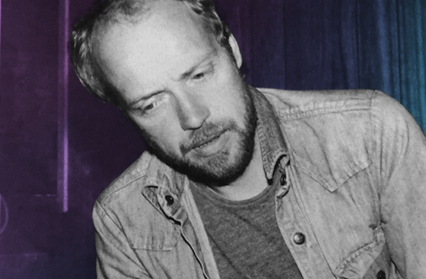
 Enjoyed this article? Support our writers directly by buying them a coffee and clicking this link.
Enjoyed this article? Support our writers directly by buying them a coffee and clicking this link.

